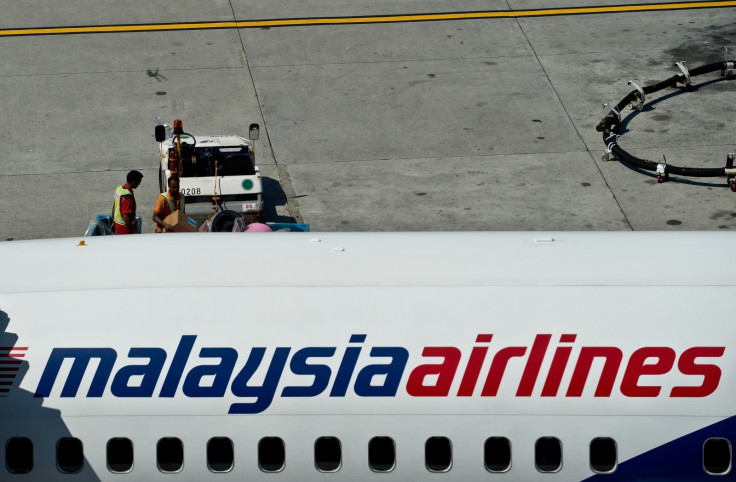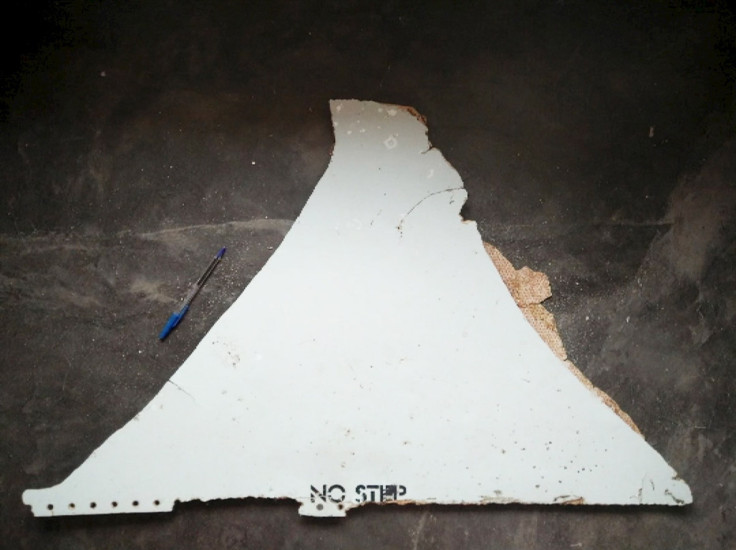MH370: What we know about the missing Malaysia Airlines Boeing 777 two years on

The disappearance of Malaysia Airlines MH370 is the biggest mystery in aviation history. Shortly after 1am on 8 March 2014, the last words were spoken from the cockpit of the Boeing 777 bound for Beijing: "Good night Malaysian three seven zero." Less than an hour later, all normal contact with the plane was lost. Two years on, here is what we know so far.
What happened on the day the plane disappeared?
The aircraft departed Kuala Lumpur International Airport at 00:41 on 8 March (16:41 GMT on 7 March) and was due to land in Beijing at 06:30 local time. According to Malaysia Airlines, the plane lost contact less than one hour after take-off and no distress signal or message was sent.
At 01:07 local time, the plane sent its last ACARS transmission (Aircraft Communications Addressing and Reporting System), which enables computers on the plane to contact computers on the ground. A transmission expected at 01:37 was never sent.
At 01:19, either the co-pilot or pilot said: "Good night Malaysian three seven zero." Initially, investigators said the phrase was: "All right, good night." The change in wording led some to raise questions about how Malaysian officials have handled the investigation.
Minutes later, the plane's transponder was shut down as the plane moved from Malaysian airspace into Vietnamese air traffic control over the South China Sea. The Civil Aviation Authority of Vietnam said the aircraft did not check in as expected with air traffic control in Ho Chi Minh City at 01:21.

At 02:15, MH370 was located at a point south of Phuket Island in the Strait of Malacca by Malaysian military radar. According to Thai military radar, the Boeing 777 then turned west and then north over the Andaman sea. Later, the Malaysian government changed the time to 02:22 and said the aircraft was further west at the time.
At 02:28, a satellite above the Indian Ocean detected the first of seven "handshakes" or "pings" from the plane, which are automatically sent out from the aircraft. The last came at 08:11. According to calculations based on the handshakes and the plane's speed, investigators said the plane flew on for another seven or eight hours after normal communications were lost.
The last handshake suggested the plane was in one of two corridors: one heading north between Thailand and Kazakhstan, and another heading south between Indonesia and the southern Indian Ocean. The revelation about the handshakes was made by British firm Inmarsat. Later, new analysis of the handshakes enabled investigators to discard the norther corridor hypothesis and focus on the southern route.
At 08:19, there is some evidence of a "partial" handshake – after the last full handshake. Investigators said this was a request from the aircraft to log on. Inmarsat said this could be a "failed login" or a "potential attempt by the system [on board the aircraft] to reset itself". Investigators also said the partial handshake could be the plane's satellite communication system powering up after an out, such as after an the electrical supply was interrupted.
On 15 March 2014, Malaysian prime minister Najib Razak said evidence suggested MH370 was deliberately diverted from its intended flightpath by someone on board. An "interim" report into the disappearance of the plane published in March 2015 by Malaysian authorities said no evidence had been found to suggest the pilots deliberately steered the aircraft off course and into the ocean.
Australian officials said the plane was most likely flying on autopilot when it crashed.

Where is the search area?
On 16 March, authorities said satellite images released of possible wreckage and tracking data appeared to confirm the aircraft ended its flight in the Indian Ocean. The search area was moved 1,100km north-east, closer to Australia, at the end of March 2014 – after analysis of the plane's maximum range and speed.
In April, authorities appeared to gain a lead in the search for MH370 with the discovery of underwater signals – or "pings" – detected by Chinese and Australian vessels. Authorities said the signals were consistent with the kind sent out by an aircraft's black boxes. The pings were used to map out an area which would be searched by submersible drones.
However, no wreckage was found by the end of May and the area was ruled out as a possible crash site. On 26 June 2014, officials announced a new 60,000 sq km search area, located around 1,800km from Perth, where teams used specialist submersible equipment to scour the sea bed.
The search for MH370 has been so difficult because of the treacherous nature of the southern Indian Ocean. Erik van Sebille, a lecturer in oceanography at the University of New South Wales in Australia, wrote in Quartz that the ocean is extremely volatile "with currents changing speed and direction from day to day, making it particularly hard to back track the drift of debris to the original impact point".
Authorities have struck other problems while searching for MH370. In January 2016, a deep-sea exploration vehicle collided with a submerged volcano.

Have we found any debris?
No trace of the plane had been recovered until the discovery of a flaperon, a two-metre piece of the wing of an aircraft, was found on Reunion Island in July 2015. French investigators confirmed the part came from MH370 after one of the three numbers on the flaperon was identified by a technician from Airbus Defense and Space in Spain, who manufactured the part. It was found 2,300 miles (3,700km) from the search area.
In February 2016, US tourist Blaine Gibson found a piece of wreckage measuring 35in by 22in on the shore of Mozambique. Malaysia's transport minister has said there is a "high possibility" the debris came from a Boeing 777, the same model as MH370, and a US official said the piece is likely part of a horizontal stabiliser – part of the tail section of an aircraft. Australia said the location of the piece was consistent with models of where ocean drifts could carry wreckage.
Who was on board the aircraft?
There were 12 crew on the aircraft, led by pilots Captain Zaharie Ahmed Shah, 53, and First Officer Fariq Abdul Hamid, 27. There were 227 passengers on board MH370, including 153 Chinese and 38 Malaysians, as well as passengers from the United States, Canada, Iran, Indonesia, Australia, India, France, New Zealand, Ukraine, Russia, Hong Kong, Taiwan and the Netherlands. Malaysia Airlines said four people had booked the flight, but did not turn up.
Two Iranian men were found to have boarded MH370 with stolen passports, one Austrian and one Italian, which raises suspicions. Interpol said both passports were listed as stolen, but no check had been made against its database. However, the two men – named as Pouria Nour Mohammad, 18, and Delavar Seyed Mohammadreza, 29 –had no link to terrorist groups and were likely migrating to Europe via Beijing.

What will happen next?
The hunt for MH370 is nearing an end, with the Australian-led search in the Indian Ocean expected to finish scouring a deep-sea zone by July. Authorities plan to end the search is nothing is found. Relatives of those on board the airliner have made a plea for authorities to continue searching for their missing loved ones even if no wreckage is found the summer.
The two-year anniversary is also the last day for families to file for airline compensation. International treaties state relatives of passengers must file within two years, but doing this means admitting their loved ones are deceased – which many people do not want to do.
A support group for relatives, Voice 370, has urged authorities to rethink the end date of the search for the missing airliner. "We believe that they should not throw in the towel, close this case and simply chalk it up as an unsolvable mystery."
© Copyright IBTimes 2025. All rights reserved.






















